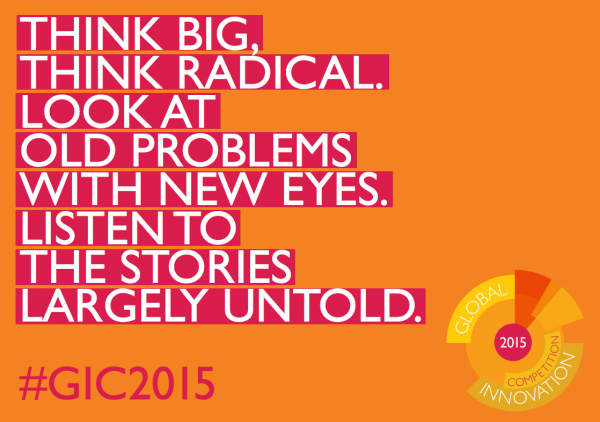In this post, South to South Lab Manager Declan Ottaro outlines the eligibility check which determined what #GIC2015 ideas made the cut, and the following steps in the competition.
The Global Innovation Competition – Keeping the Good Ideas In
On October 22, the Global Innovation Competition 2015 entered its second phase when it was opened up to public voting. This year, 241 ideas made it through the eligibility test into the public scrutiny round of the competition. With £300,000 at stake it’s crucial that we don’t let any good ideas slip through our fingers, and that the best ideas make it through. But how do we do this?
A team drawn from all three members of the implementing consortium – the Institute of Development Studies (IDS), Hivos and Ushahidi – is tasked with the responsibility of reviewing all applications. All 391 ideas underwent an initial review that focused on answering the following questions:
Does the idea fit within the Making All Voices Count intent?
Basic checks include ascertaining that the idea tackled an issue for which Making All Voices Count was set up, more on this here. Ideas were also checked to make sure they conformed to international law, that funds were requested for project work and not core funding, and so on.
Does the idea fit within this year’s GIC themes?
The four themes were laid out in the competition manual. Ideas were checked to verify that they tackled a problem area within the theme for this year’s competition.
Is the application complete?
Applicants were asked to answer a basic set of questions to aid the voting public to make an informed decision. A check was carried out to make sure this information was complete.
In addition, ideas were checked to make sure they were not submitted more than once. In incidences where an idea had been submitted more than once, the most recent submission was retained and any duplicates removed
Ideas that met the requirements were immediately put through. Those that didn’t were passed on for a second check. Ideas which were confirmed to be ineligible were removed, and others were taken for a third and final ‘tie breaker’ review. Ideas with two ‘yes’ votes were put through to the next stage while those with two ‘no’ votes were closed. All idea submitters were notified of the decision by email.
It is important to clarify that this process was not a quality check. The threshold for entry has been kept deliberately low to allow people with good ideas, regardless of the stage of idea development, to have an equal opportunity to participate.
Sir William Blackstone is quoted as saying "It is better that ten guilty persons escape than that one innocent suffer." A parallel can be drawn in the review of the ideas. Where an idea’s eligibility was not immediately clear it was given the benefit of the doubt and put through. The process is of course not without its flaws, but we are confident that as much care as possible has been taken to make sure that no idea was unjustly left out. We will continually review this process with the aim of making it as thorough and fair as possible.
It is now down to you, the general public, to help us identify and back the best ideas. We all have a stake in this. Have your say on https://www.makingallvoicescount.org/GIC2015/.
Over to you.
